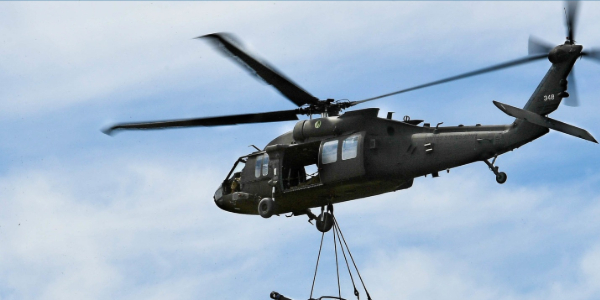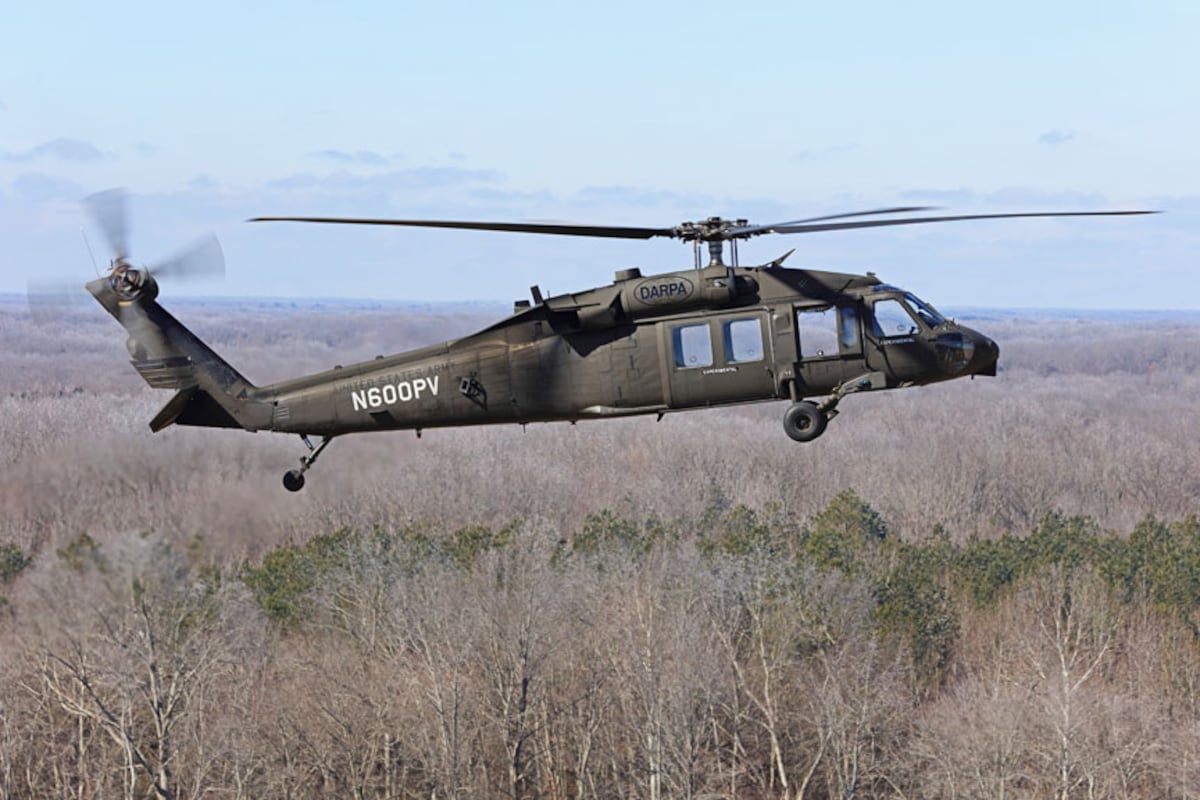Discover the Blackhawk Helicopter's Role in Search-and-Rescue and Catastrophe Alleviation Initiatives
Discover the Blackhawk Helicopter's Role in Search-and-Rescue and Catastrophe Alleviation Initiatives
Blog Article
Revealing the Power and Flexibility of the Blackhawk Helicopter
The Blackhawk helicopter stands as a testimony to design excellence and military advancement, dramatically forming the landscape of modern airborne operations. Initially established in the late 1960s, this dual-engine aircraft has advanced right into a multifaceted platform with the ability of executing an array of goals, from tactical troop implementations to immediate clinical discharges. Its layout integrates innovative modern technology and products, boosting both efficiency and survivability. As we explore its background and operational capacities, one have to take into consideration exactly how the Blackhawk remains to influence modern fight approaches and humanitarian initiatives alike. What does this mean for the future of army aeronautics?
History of the Blackhawk
The background of the Blackhawk helicopter is marked by substantial technical innovations and a critical development in army air travel. Established in the late 1960s by Sikorsky Airplane, the UH-60 Blackhawk was at first conceived to replace the older UH-1 Iroquois, generally called the "Huey." The Blackhawk's first trip took place in 1974, and it was officially presented to the united state Army in 1979.


This aircraft was designed to meet the requiring needs of contemporary war, concentrating on rate, convenience, and durability (Blackhawk Helicopter). Its ability to operate in different environments, combined with sophisticated avionics and design attributes, swiftly developed the Blackhawk as a vital possession for armed forces procedures worldwide
Throughout the 1980s and 1990s, the Blackhawk saw extensive usage in different conflicts, including the Gulf Battle and humanitarian goals. The helicopter's flexibility permitted it to offer several roles, from army transportation to medevac and logistical support. As modern technology progressed, so did the Blackhawk, resulting in countless variations that satisfied certain mission needs. Today, the Blackhawk continues to be a famous sign of army air travel, constantly improved to meet contemporary challenges.
Secret Attributes and Requirements
Blackhawk helicopters are renowned for their engineering excellence and operational flexibility, flaunting a variety of essential functions and specifications that enhance their effectiveness in different armed forces duties. One of one of the most significant qualities is their dual-engine configuration, commonly powered by the T700-GE-701C engines, which offer phenomenal reliability and performance. The helicopter has a maximum cruise speed of around 150 knots and a service ceiling of approximately 20,000 feet, allowing it to operate successfully in diverse atmospheres.
The Blackhawk's airframe is built from advanced composite materials and aluminum alloys, ensuring a robust framework while reducing weight. It includes a fully articulated blades system that provides exceptional agility and security. The helicopter can fit approximately 11 fight soldiers or lug approximately 8,000 pounds of external freight, making it extremely versatile for numerous missions.
Furthermore, the Blackhawk is outfitted with innovative avionics and interaction systems, improving situational understanding and mission coordination. Its ability to run in damaging climate condition, combined with its reduced acoustic signature, makes it a stealthy alternative for tactical procedures. Overall, these attributes add to the Blackhawk's reputation as a cornerstone of modern-day armed forces aviation.
Versatile Operational Duties
Popular for their design quality and advanced capabilities, Blackhawk helicopters serve a multitude of functional duties within armed forces structures. Initially developed for army transportation, their flexibility has actually increased, enabling them to do numerous objectives effectively.
One of the key functions of the Blackhawk is as an energy helicopter, helping with logistical assistance by moving materials and employees to and from remote areas. Additionally, they master clinical evacuation (MEDEVAC) operations, equipped with innovative clinical tools and employees to offer vital care in the area.
In combat scenarios, Blackhawks can run as armed companion platforms, sustaining ground forces by engaging opponent assets while guaranteeing army safety and security. Their capacity for unique procedures makes them essential; they can conduct reconnaissance missions, personnel recovery, and straight activity raids, typically in high-threat atmospheres.
In Addition, the Blackhawk's flexibility enables it to sustain altruistic goals and catastrophe action efforts, delivering aid and vital solutions in times of situation. This wide spectrum of functional duties shows the Blackhawk helicopter's exceptional convenience, reaffirming its condition as an important possession in modern-day army operations worldwide.
Technical Developments
Many technological technologies contribute to the Blackhawk helicopter's remarkable performance and flexibility in diverse functional atmospheres. One of the most substantial advancements is its composite rotor blades, which improve lift and maneuverability while decreasing weight and maintenance needs. The rotor system employs innovative products that boost resilience and withstand environmental degradation, guaranteeing trusted procedure in extreme conditions.
Additionally, the Blackhawk is equipped with a modern avionics collection that integrates advanced navigation and interaction systems - Blackhawk Helicopter. This includes GPS, radar, and multi-function screens that help with real-time situational understanding for pilots, contributing to mission success under tough scenarios
Furthermore, the helicopter's fly-by-wire control system permits accurate handling and boosted responsiveness, offering pilots with enhanced control during facility maneuvers. The unification of advanced engine modern technology, such as the T700-GE-701C engine, additional boosts performance, supplying a fantastic read raised power result and fuel performance.
Last but not least, modular design concepts make it possible for rapid reconfiguration for different objectives, from troop transportation to medical evacuation, making the Blackhawk a flexible asset in armed forces and altruistic procedures. These technical technologies jointly make sure that the Blackhawk stays a formidable visibility in the skies.
Influence On Modern War

Equipped with advanced avionics and interaction systems, the Blackhawk enables seamless control amongst see this page ground and air units, making certain timely and precise feedback to vibrant combat circumstances. Its convenience permits for rapid release in varied settings, from metropolitan settings to tough surfaces, reflecting the complex nature of modern warfare.
Additionally, the Blackhawk's premium rate and agility assist in fast insertion and removal of workers, lessening exposure to adversary fire. Its capacity to operate in hostile problems, paired with innovative protective measures, boosts survivability and goal success prices.
As modern-day problems increasingly count on joint operations and quick response, the Blackhawk helicopter remains at the forefront of military technique, embodying the advancement of air mobility and the essential function of air power in accomplishing critical goals. Its effect on contemporary war remains to redefine the abilities of armed pressures around the world.

Final Thought
In conclusion, the Blackhawk helicopter exhibits the crossway of innovative engineering and functional flexibility, strengthening its status as a keystone of contemporary army air travel. Its historic significance, amazing attributes, and versatility throughout different mission profiles emphasize its critical role in modern warfare. As technical developments proceed to enhance its capacities, the Blackhawk continues to be an essential property for armed forces around the world, demonstrating exceptional efficiency in both combat and altruistic procedures.
The Blackhawk helicopter stands as a testimony to engineering quality and army innovation, dramatically forming the landscape of modern-day aerial procedures.The background of the Blackhawk helicopter is marked by substantial technical improvements and a tactical advancement in armed forces aeronautics.Blackhawk helicopters are renowned for their engineering excellence and operational convenience, boasting a range of key attributes and specs that improve their efficiency in numerous army duties.Many technological developments add to the visit this site Blackhawk helicopter's extraordinary performance and adaptability in diverse operational settings.In conclusion, the Blackhawk helicopter exemplifies the intersection of advanced design and functional flexibility, strengthening its standing as a foundation of modern armed forces air travel.
Report this page